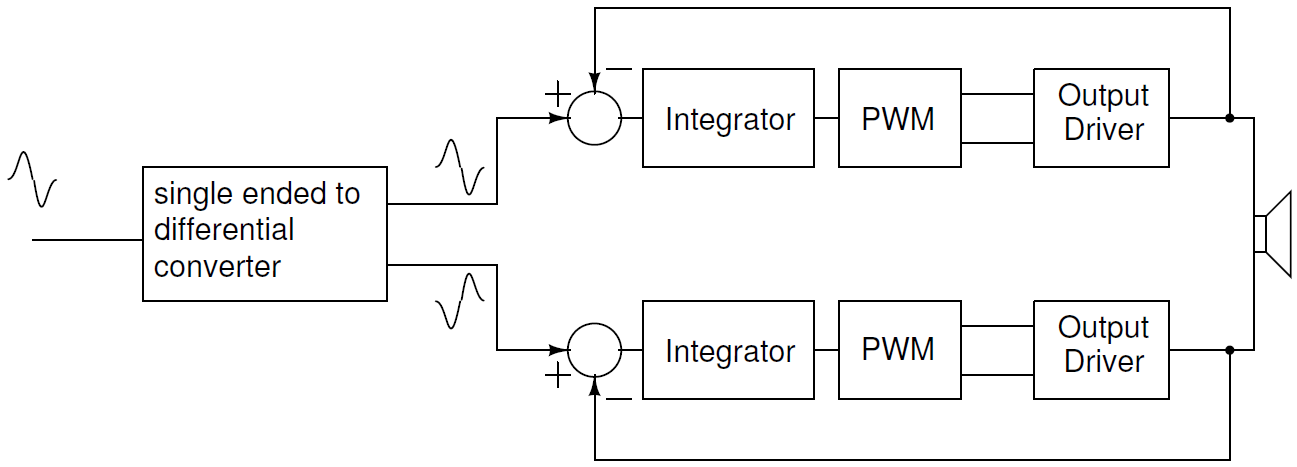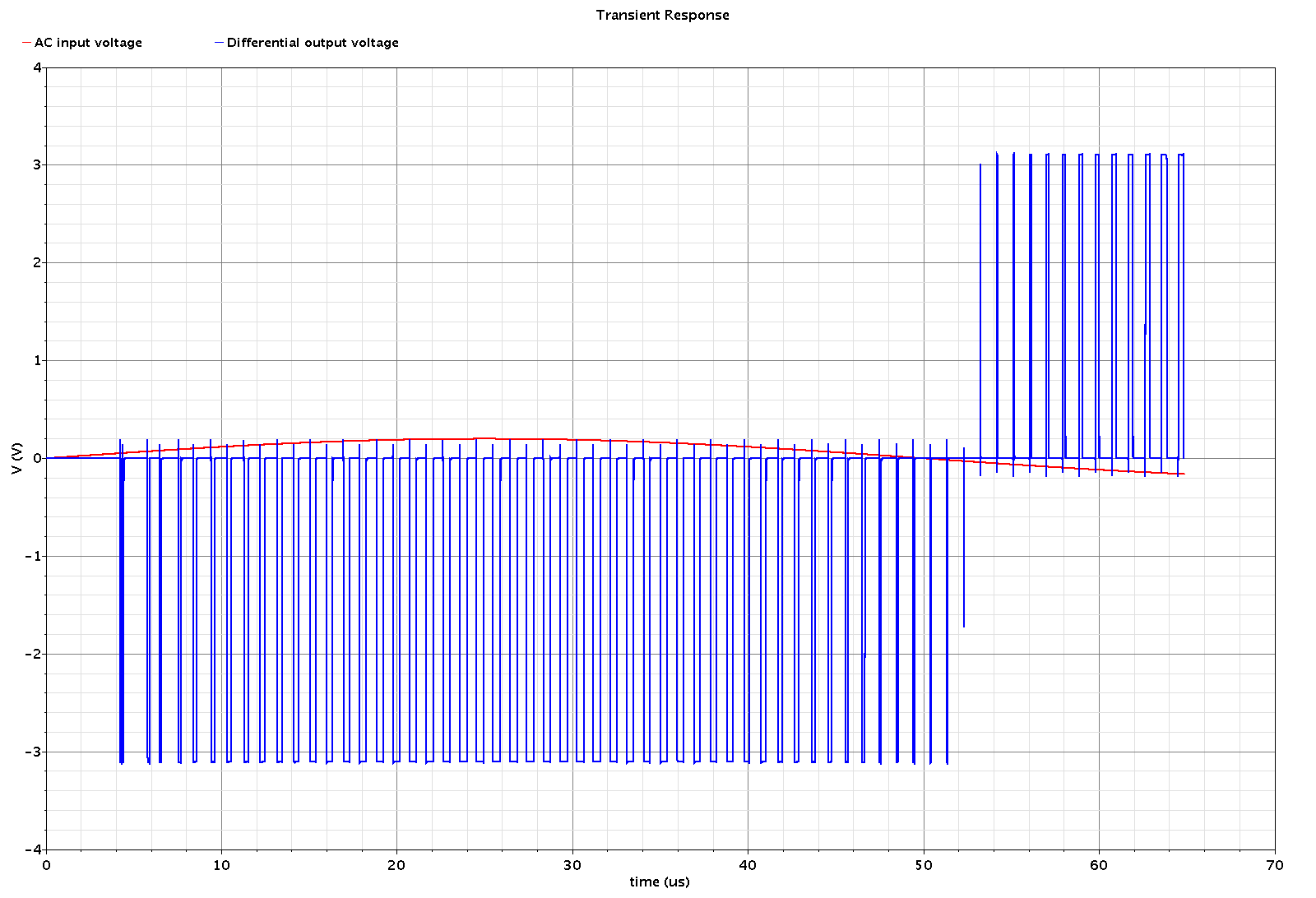System Overview
Audio amplifiers are typically characterized by their ability to reproduce the sound exactly as it was recorded. In today's mobile world, being able to do so while being power-efficient is an important consideration. Class-D amplifiers utilize transistors as switches instead of as an amplifier in the traditional sense of the term. By doing so, they manage to achieve very high power efficiencies without introducing too much distortion. Hence, they can be found in nearly every mobile phone and are extremely ubiquitous.
Class-D audio amplifiers usually require a filter at the output in order to remove high frequency components and achieve high power efficiency. The topology we chose, which is known as the Bridged Three-Level (BTL), is unique in the fact that it is filterless. This reduces the number of external components which helps in reducing board area. A block diagram of a typical BTL class-D amplifier is shown below:

The input to the system first passes through the single-ended to differential block which generates 2 outputs of the same amplitude as the input, one of which is in-phase while the other is out-of-phase with respect to the input. These are then used to modify the width of a high-frequency pulse such that the duty cycle of the pulse is linearly related to the instantaneous amplitude of the input. This high-frequency pulse then acts as the control signal to turn on or off the transistors that form the output driver. Finally, the integrator block serves to attenuate the high frequency components in the negative feedback loop.
Figure 2 shows the input and output of a typical BTL class-D amplifier setup. For no input, the two output waveforms have 50% duty cycle and are exactly matched so that their differential becomes 0. As the instantaneous amplitude of the input goes positive, the in-phase channel output duty cycle decreases while the out-of-phase channel output duty cycle increases so that the differential pulse has negative amplitude. The converse occurs when the input goes negative and the differential pulse then has positive amplitude.

